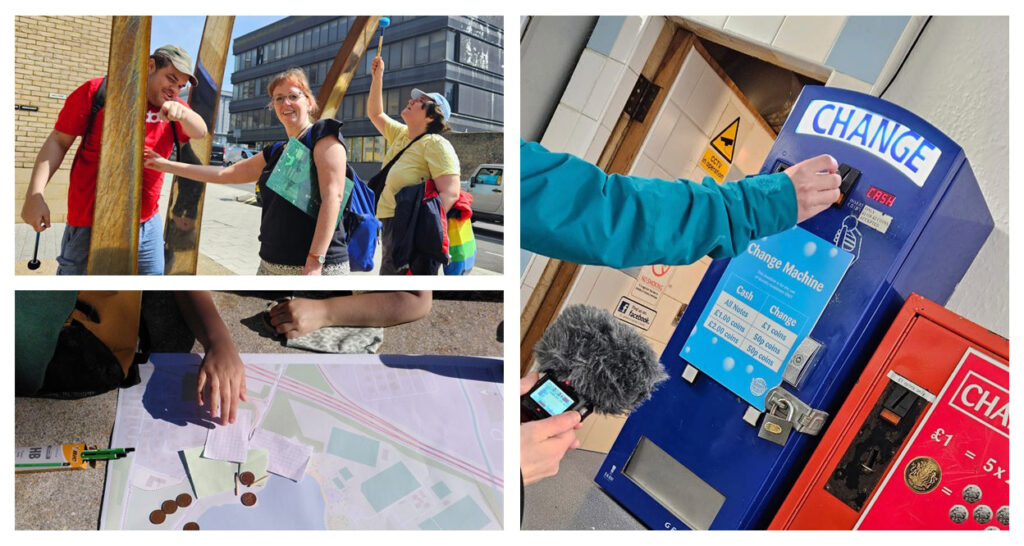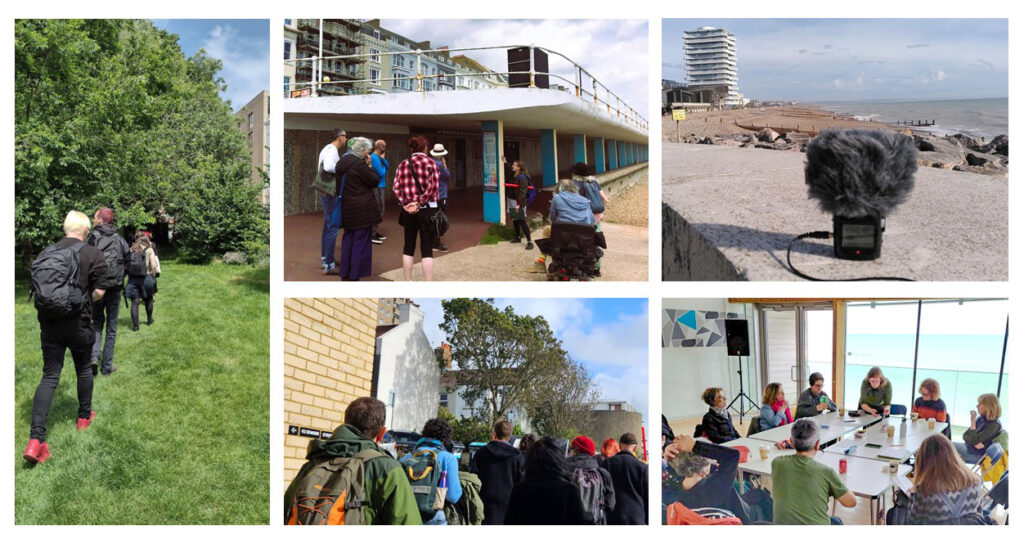What is participatory listening research?
PLR is an interdisciplinary approach that blends together sound, mobile, and creative methods with a participatory ethos. Listening is central to every stage of the research. By embracing participatory principles, the tools and techniques aim to maximise the participation of people who are most impacted by the research topic. The approach values the diverse ways people relate to sounds and listen to surrounding environments, prioritising inclusion and accessibility.

What can we learn through listening with others to the environment?
Listening has the potential to generate new knowledge, understandings, and meaningful connections with our environment and those around us. But within the sensory hierarchy, listening has traditionally been side-lined in academia and more broadly in visually dominated Western societies. To get through our everyday lives, we often filter out the sounds around us. We all listen differently and have diverse relationships to sound.

By being supported to tune into our acoustic surroundings, we can make new discoveries about:
Ourselves
How do I listen? What is my relationship to these sounds? What do I want to listen to? What influences the way I listen? What sounds do I want to make?
Others
How do other people listen? Who is being heard or not heard? What do I share with others through sound?
Our environments
Where is quiet/noisy and why? What or who is making a sound here? What can’t I hear? How are the sounds changing over time? In what ways does listening connect or disconnect us from the surrounding environment?
Place-based issues
What sounds are privileged or excluded here and why? Who gets to decide the sounds we listen to? Who and what is impacted by the changing sounds? What do these sounds tell us about a place?
Where does it come from?
The PLR approach has been developed by Dr Bethan Prosser through her doctoral and post-doctoral research. There are many exciting and brilliant sound methods that already exist and continue to be created. However, Bethan realised that although lots of visual methods have been explicitly named as “participatory” (e.g. participatory mapping, photo-voice), the term is not often attached to sound and listening-based methods. She created this term, participatory listening research, as an umbrella to gather different endeavours that combine listening-based methods and a participatory ethos.
During her PhD, Bethan developed listening-centred methods to investigate residents’ experiences of urban seaside gentrification on the UK south coast. Bethan has since extended and tested out different applications of this innovative and creative toolbox for researchers and practitioners to engage local communities in place-based and policy-related issues.
Although Bethan leads on this methodology, the approach is born out of many collaborations with community organisations, practitioners, and researchers. The approach will continue to expand and develop with new projects and applications – please get in contact if you are interested in future collaborations.

What’s in the toolbox?
Design
- Researcher site-scoping listening walks
- Audio field recordings of the sites
- Listening-back to site material
- Piloting of different listening activities
- Adaptations for delivering remotely: listening-with + ex situ listening
Data collection
- Silent individual listening walks
- Silent listening-at-home activities
- Group listening walks
- Participant audio/visual field recordings
- Researcher-participant listening walk phone calls
- Listening-based elicitation interviews
- Co-mapping of walking routes & listening to sites
Dissemination & engagement
- Sound collages & composition
- Audio sampling
- Podcasts
- Curated listening playlists
- Co-designing Interactive Listening Walks
- Post-walk structured discussion
- Digital media walks – being developed
Analysis
- Researcher & participants listening back
- Sound stimuli reflective framing
- Interview listening-focused thematic analysis
- Layered soundmapping technique
- Sound collaging
- Creative sonic reflective writing
What’s in the toolbox?
Design
- Researcher scoping sites listening walks
- Audio field recordings of the sites
- Listening-back to site material
- Piloting of different listening activities
- Adaptations for delivering remotely: listening-with + ex situ listening

Data collection
- Silent individual listening walks
- Silent listening-at-home activities
- Group listening walks
- Participant audio/visual field recordings
- Researcher-participant listening walk phone calls
- Listening-based elicitation interviews
- Co-mapping: walking routes & listening to sites

Analysis
- Researcher & participants listening back
- Sound stimuli reflective framing
- Interview thematic analysis
- Layered soundmapping technique
- Sound collaging
- Creative sonic reflective writing

Dissemination & engagement
- Sound collages & composition
- Audio sampling
- Podcasts
- Curated listening playlists
- Co-designing Interactive Listening Walks
- Post-walk structured discussion
- Digital media walks – being developed
